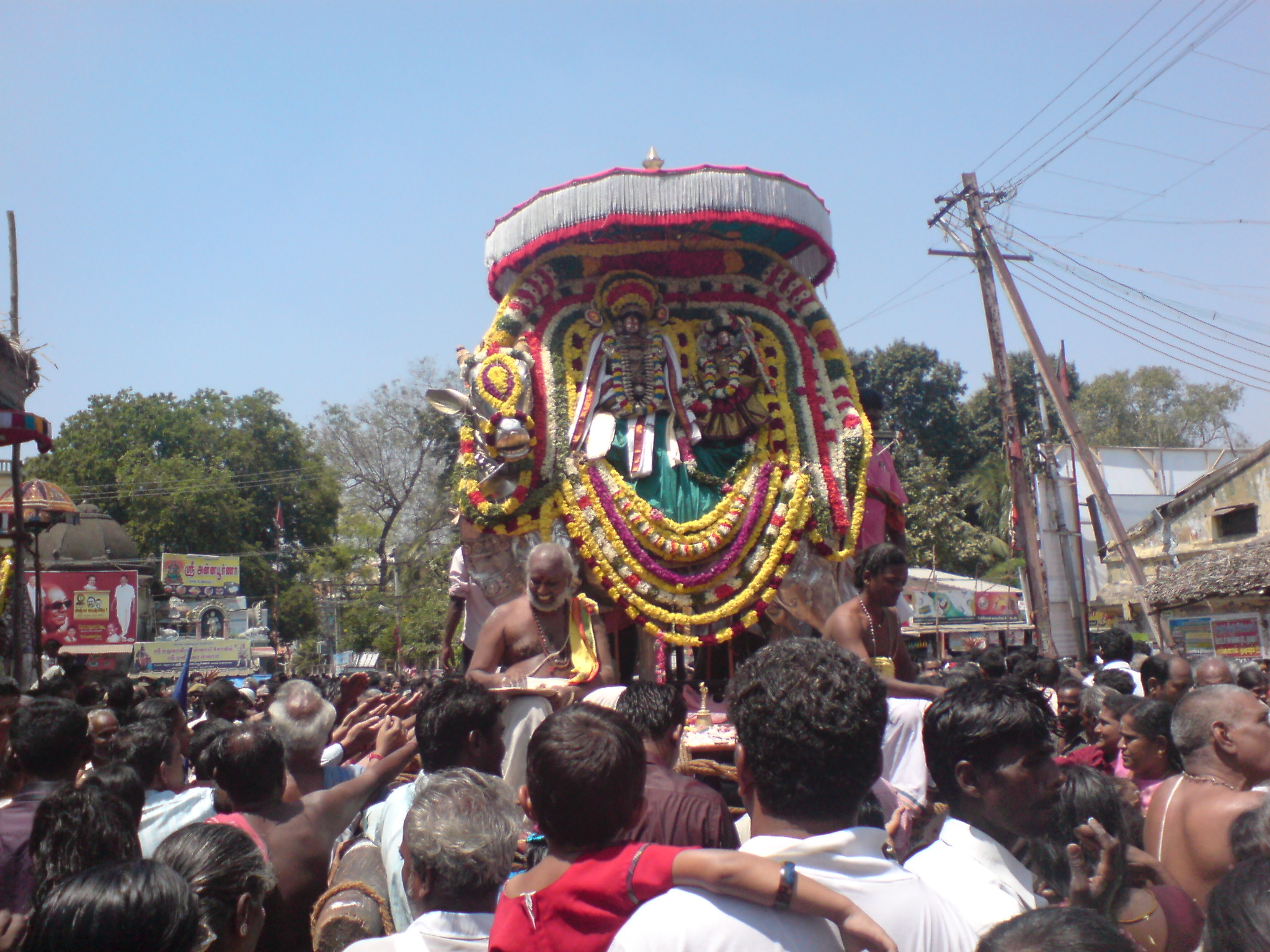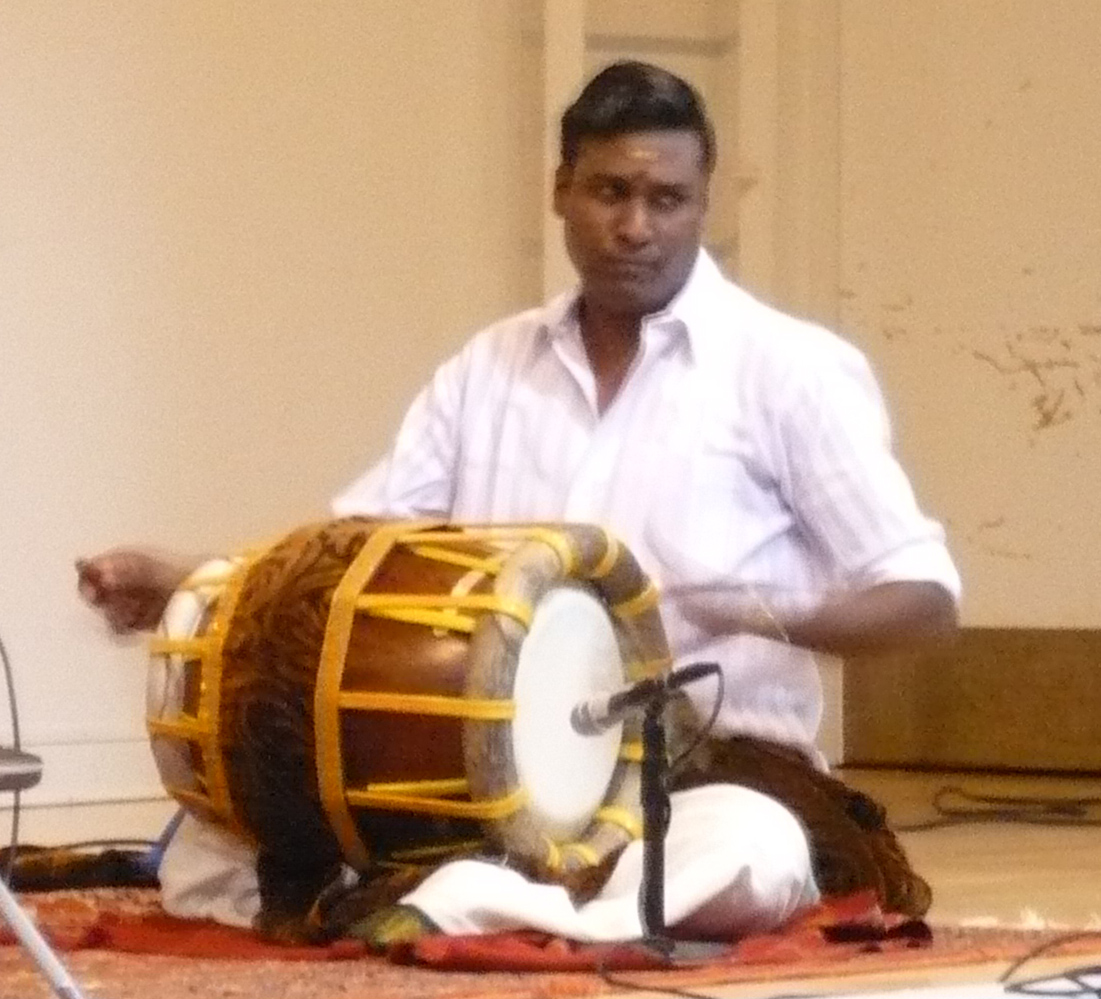|
Madavar Vilagam Vaidyanathar Temple
Madavar Vilagam Vaidyanathar temple is a Shiva temple located in Madavar Vilagam, located in one kilometer southerly to Srivilliputhur in Virudhunagar district in the South Indian state of Tamil Nadu, is dedicated to the Hindu god Shiva. Constructed in the Dravidian style of architecture, the temple has two precincts. Shiva is worshiped as Vaidyanathar and his consort Parvati as Sivakami. The temple is the largest Shiva temple in the district. Shiva is worshipped as Vaidyanathar or the "God of healing". The holy water of the Siddhamirtham tank in the temple complex is believed to have curative effects, and a holy dip here is believed to cure all diseases. The temple was built by Thirumalai Nayak during the 16th century. A granite wall surrounds the temple, enclosing all its shrines. The temple has a five-tiered gateway tower originally built by Chandrakula Pandya Vijayanagar and Nayak kings commissioned pillared halls and major shrines of the temple during the 16th century. T ... [...More Info...] [...Related Items...] OR: [Wikipedia] [Google] [Baidu] |
Dravidian Architecture
Dravidian architecture, or the South Indian temple style, is an architectural idiom in Hindu temple architecture that emerged from South India, reaching its final form by the sixteenth century. It is seen in Hindu temples, and the most distinctive difference from north Indian styles is the use of a shorter and more pyramidal tower over the garbhagriha or sanctuary called a vimana, where the north has taller towers, usually bending inwards as they rise, called shikharas. However, for modern visitors to larger temples the dominating feature is the high gopura or gatehouse at the edge of the compound; large temples have several, dwarfing the vimana; these are a much more recent development. There are numerous other distinct features such as the ''dwarapalakas'' – twin guardians at the main entrance and the inner sanctum of the temple and ''goshtams'' – deities carved in niches on the outer side walls of the garbhagriha. Mentioned as one of three styles of temple building in t ... [...More Info...] [...Related Items...] OR: [Wikipedia] [Google] [Baidu] |
Durga
Durga ( sa, दुर्गा, ) is a major Hindu goddess, worshipped as a principal aspect of the mother goddess Mahadevi. She is associated with protection, strength, motherhood, destruction, and wars. Durga's legend centres around combating evils and demonic forces that threaten peace, prosperity, and dharma, representing the power of good over evil. Durga is believed to unleash her divine wrath against the wicked for the liberation of the oppressed, and entails destruction to empower creation. Durga is seen as a motherly figure and often depicted as a beautiful woman, riding a lion or tiger, with many arms each carrying a weapon and often defeating demons. She is widely worshipped by the followers of the goddess-centric sect, Shaktism, and has importance in other denominations like Shaivism and Vaishnavism. The most important texts of Shaktism, Devi Mahatmya, and Devi Bhagavata Purana, revere Devi (the Goddess) as the primordial creator of the universe and the Brah ... [...More Info...] [...Related Items...] OR: [Wikipedia] [Google] [Baidu] |
Pradosha
Pradosha or Pradosham (IAST: Pradoṣa) is a bimonthly occasion on the thirteenth day of every fortnight in the Hindu calendar. Aiya V. 1906, p. 103 It is closely connected with the worship of the Hindu god Shiva. The auspicious three-hour period 1.5 hours before and after sunset is considered as the most suited and optimal time for worship of Shiva on this day. The fasting vow performed during the period is called "Pradosha vrata". A devotee should wear rudraksha, Vibhuti and worship Shiva by abhisheka, sandal paste, bael leaves, fragrance, deepa and naivedya (food offerings). Etymology Pradosha is indicative of day names in the calendar. Pradosha was the son of Kalpa and Dosha. He had two brothers, namely Nishita and Vyustha. The three names mean beginning, middle and end of night. The days from every new moon day to every full moon day is called "Shukla Paksha" and the days from every full moon day to new moon day is called "Krishna Paksha". During every month and during ever ... [...More Info...] [...Related Items...] OR: [Wikipedia] [Google] [Baidu] |
Vedas
upright=1.2, The Vedas are ancient Sanskrit texts of Hinduism. Above: A page from the '' Atharvaveda''. The Vedas (, , ) are a large body of religious texts originating in ancient India. Composed in Vedic Sanskrit, the texts constitute the oldest layer of Sanskrit literature and the oldest scriptures of Hinduism. There are four Vedas: the Rigveda, the Yajurveda, the Samaveda and the Atharvaveda. Each Veda has four subdivisions – the Samhitas (mantras and benedictions), the Aranyakas (text on rituals, ceremonies, sacrifices and symbolic-sacrifices), the Brahmanas (commentaries on rituals, ceremonies and sacrifices), and the Upanishads (texts discussing meditation, philosophy and spiritual knowledge).Gavin Flood (1996), ''An Introduction to Hinduism'', Cambridge University Press, , pp. 35–39A Bhattacharya (2006), ''Hindu Dharma: Introduction to Scriptures and Theology'', , pp. 8–14; George M. Williams (2003), Handbook of Hindu Mythology, Oxford University Press, , p ... [...More Info...] [...Related Items...] OR: [Wikipedia] [Google] [Baidu] |
Tavil
A ''thavil'' (Tamil language, Tamil:தவில்) or ''tavil'' is a barrel-shaped percussion instrument from Tamil Nadu. It is also widely used in Andhra Pradesh, Karnataka, Kerala, Tamilnadu and Telangana States of South India. It is used in temple, folk music, folk and Carnatic music, often accompanying the ''nadaswaram''. The ''thavil'' and the ''nadaswaram'' are essential components of traditional festivals and ceremonies in South India. In folk music contexts, a pair of wider, slimmer sticks are sometimes used. Thanjavur is famous for ''thavil'', so called ''Thanjavur Thavil''. In Kollywood Filmi songs thavils are mostly used, Notable movies: "Thillaanaa Mohanambal", "Paruthiveeran", "Karagattakaran", "Sarvam Thaala Mayam". History Thavil is a traditional musical instrument of the ancient city of Thanjavur in Tamil Nadu. It is an integral part of the Carnatic music in Thanjavur. It is mostly made in Thanjavur and Valayapatti. Physical components The ''thavil'' ... [...More Info...] [...Related Items...] OR: [Wikipedia] [Google] [Baidu] |
Nagaswaram
The Nagaswaram (nādḥasvaram) is a double reed wind instrument from South India. It is used as a traditional classical instrument in Tamil Nadu, Andhra Pradesh, Telangana, Karnataka, and Kerala. This instrument is "among the world's loudest non-brass acoustic instruments". It is a wind instrument partially similar to the North Indian ''shehnai,'' but much longer, with a hardwood body, and a large flaring bell made of wood or metal. In South Indian culture, the nadasvaram is considered to be very auspicious, and it is a key musical instrument played in almost all Hindu weddings and temples of the South Indian tradition. It is part of the family of instruments known as ''mangala vadyam'' (lit. ''mangala'' "auspicious", ''vadya'' "instrument"). The instrument is usually played in pairs, and accompanied by a pair of drums called ''thavil''; it can also be accompanied with a drone from a similar oboe, called the ottu. History The nadasvaram is referred to in many ancient Tam ... [...More Info...] [...Related Items...] OR: [Wikipedia] [Google] [Baidu] |
Naivedhya
200px, Prasad thaal offered to Swaminarayan temple in Ahmedabad ">Shri Swaminarayan Mandir, Ahmedabad">Swaminarayan temple in Ahmedabad Prasada (, Sanskrit: प्रसाद, ), Prasadam or Prasad is a religious offering in Hinduism. Most often ''Prasada'' is vegetarian food especially cooked for devotees after praise and thanksgiving to the Lord. Mahaprasada (also called Bhandarā),Pashaura Singh, Louis E. Fenech, 2014The Oxford Handbook of Sikh Studies/ref> is the consecrated food offered to the deity in a Hindu temple which is then distributed and partaken by all the devotees regardless of any orientation.Chitrita Banerji, 2010Eating India: Exploring the Food and Culture of the Land of SpicesSubhakanta Behera, 2002Construction of an identity discourse: Oriya literature and the Jagannath lovers (1866-1936) p140-177.Susan Pattinson, 2011The Final Journey: Complete Hospice Care for the Departing Vaishnavas pp.220. ''Prasada'' is closely linked to the term Naivedya ( sa, न� ... [...More Info...] [...Related Items...] OR: [Wikipedia] [Google] [Baidu] |
Abhisheka
Abhisheka () means "bathing of the divinity to whom worship is offered." It is a religious rite or method of prayer in which a devotee pours a liquid offering on an image or murti of a God or Goddess. Abhisheka is common to Indian religions such as Hinduism, Buddhism and Jainism. Hinduism An abhiṣeka is conducted by priests by bathing the image of the deity being worshipped, amidst the chanting of mantras. Usually, offerings such as milk, yogurt, ghee, honey, panchamrita, sesame oil, rose water, sandalwood paste may be poured among other offerings depending on the type of abhishekam being performed. This rite is routinely performed in Hindu temples. A '' Rudrābhiṣeka'' or abhiṣeka of Rudra is performed on lingams. A Kumbhabhishekam is a consecration ritual for a Hindu temple. Buddhism Vajrayana Buddhism In Vajrayana Buddhism or Mantrayana Buddhism, one enters into the path of Vajrayana Buddhism by receiving the four stages of tantric empowerments, or abhisheka: the ... [...More Info...] [...Related Items...] OR: [Wikipedia] [Google] [Baidu] |
Shaiva
Shaivism (; sa, शैवसम्प्रदायः, Śaivasampradāyaḥ) is one of the major Hindu traditions, which worships Shiva as the Supreme Being. One of the largest Hindu denominations, it incorporates many sub-traditions ranging from devotional dualistic theism such as Shaiva Siddhanta to yoga-orientated monistic non-theism such as Kashmiri Shaivism.Ganesh Tagare (2002), The Pratyabhijñā Philosophy, Motilal Banarsidass, , pages 16–19 It considers both the Vedas and the Agama texts as important sources of theology.Mariasusai Dhavamony (1999), Hindu Spirituality, Gregorian University and Biblical Press, , pages 31–34 with footnotesMark Dyczkowski (1989), The Canon of the Śaivāgama, Motilal Banarsidass, , pages 43–44 Shaivism developed as an amalgam of pre-Vedic religions and traditions derived from the southern Tamil Shaiva Siddhanta traditions and philosophies, which were assimilated in the non-Vedic Shiva-tradition. In the process of Sanskritisation ... [...More Info...] [...Related Items...] OR: [Wikipedia] [Google] [Baidu] |
Puja (Hinduism)
''Puja'' ( sa, पूजा, pūjā, translit-std=IAST) is a worship ritual performed by Hindus, Buddhists and Jains to offer devotional homage and prayer to one or more deities, to host and honor a guest, or to spiritually celebrate an event. It may honor or celebrate the presence of special guests, or their memories after they die. The word ''pūjā'' is Sanskrit, and means reverence, honor, homage, adoration, and worship.पूजा ''Sanskrit Dictionary'', Germany (2009) Puja, the loving offering of light, flowers, and water or food to the divine, is the essential ritual of Hinduism. For the worshipper, the divine is visible in the image, and the divinity sees the worshipper. The interaction between human and deity, between |
Azadirachta Indica
''Azadirachta indica'', commonly known as neem, nimtree or Indian lilac, is a tree in the mahogany family Meliaceae. It is one of two species in the genus ''Azadirachta'', and is native to the Indian subcontinent and most of the countries in Africa. It is typically grown in tropical and semi-tropical regions. Neem trees also grow on islands in southern Iran. Its fruits and seeds are the source of neem oil. Description Neem is a fast-growing tree that can reach a height of , and rarely . It is deciduous, shedding many of its leaves during the dry winter months. The branches are wide and spreading. The fairly dense crown is roundish and may reach a diameter of . The neem tree is similar in appearance to its relative, the chinaberry (''Melia azedarach''). The opposite, pinnate leaves are long, with 20 to 30 medium to dark green leaflets about long. The terminal leaflet often is missing. The Petiole (botany), petioles are short. White and fragrant flowers are arranged in more-or- ... [...More Info...] [...Related Items...] OR: [Wikipedia] [Google] [Baidu] |









